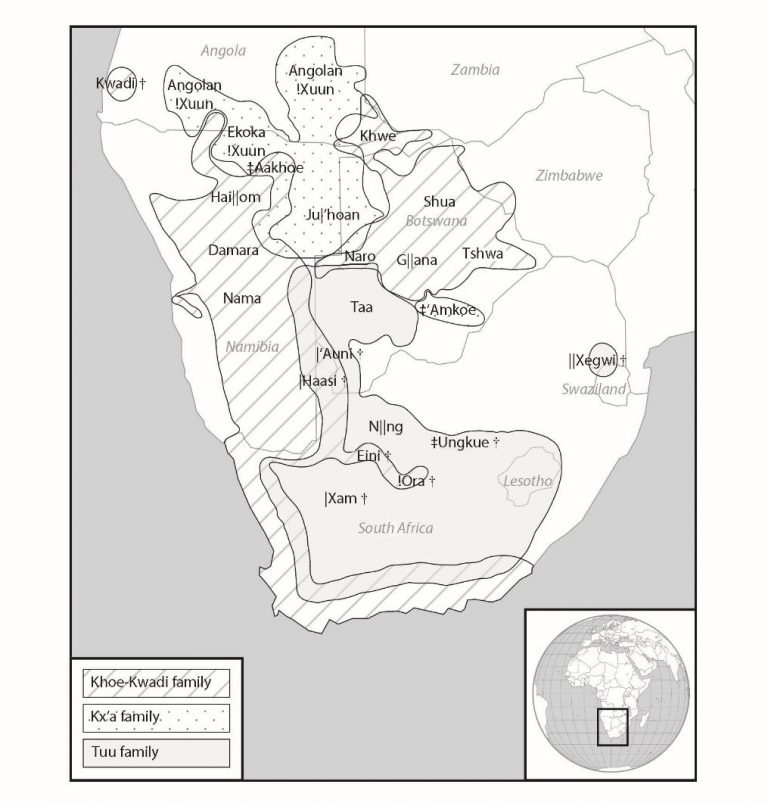Introduction
The present collection provides a digital platform for material and resources available mainly on Khoekhoegowab − but also on its immediate sister languages such as Haiǁ’om and ǂĀkhoe, as well as the, by now extinct Cape Khoekhoe varieties like !Ora (Korana), Xiri (Griqua), and Eini.
Khoekhoegowab is a Khoe-Kwadi language subsumed conventionally under the Khoisan languages of southern Africa. It is, today, the most widely distributed Khoisan language, both in terms of speaker numbers and their geographical spread. Khoekhoegowab speakers range from Nama communities in the Northern Cape region of South Africa to Damara communities in the northwestern extremes of the present day Namibia. Pockets of Khoekhoegowab speakers are also found in Botswana.
Its reference in literature has seen a considerable change historically − from Hottenttot (pejorative), Nama, Namaqua, and Dama, Damara, Bergdamara, to Nama/Damara and eventually Khoekhoegowab (a reference used after Namibia gained independence in 1990). The latter reference constitutes the official name of this language in Namibia.
Khoekhoegowab is based on the Latin script with additional characters added to include the representation of click consonants. The language is used for radio broadcasting in Namibia and South Africa. Weekly television news broadcasts are also transmitted in Khoekhoegowab in Namibia (alongside other indigenous languages). Furthermore, it can be studied also at university level in Namibia. In South Africa, it is taught on primary school level.
Figure 1 presents the distribution of Khoekhoegowab in southern Africa and the three major Khoisan language families.

Figure1: The distribution of Khoekhoegowab varieties: Damara and Nama, etc. (Güldemann & Fehn 2014: 12)
References:
- Güldemann, Tom and Anne-Marie, Fehn. 2014. Beyond ‘Khoisan’: Historical relations in the Kalahari Basin. Amsterdam/Philadelphia: John Benjamins.
- Haacke, Wilfrid, H. G. and Eliphas, Eiseb. 2002. A Khoekhoegowab dictionary with an English-Khoekhoegowab index. Windhoek: Gamsberg Macmillan.
- Simons, Gary F. and Charles D. Fennig (eds.). 2018. Ethnologue: Languages of the World, Twenty-first edition. Dallas, Texas: SIL International. Online version: http://www.ethnologue.com. Accessed 27 September 2018.
- Widlok, Thomas. 1995. The ‘irrealis’ as work in Haiǁom. In Traill, Anthony, Rainer Vossen, and Megan Biesele (eds.), The Complete Linguist: Papers in Memory of Patrick J. Dickens. 371-382.
- Widlok, Thomas. 1997. ǂĀkhoe pragmatics, Haiǁom identity and the Khoekhoe language. In Haacke, Wilfrid Heinrich Gerhard and Edward D. Elderkin (eds.), Namibian languages: reports and papers. 117–124.
